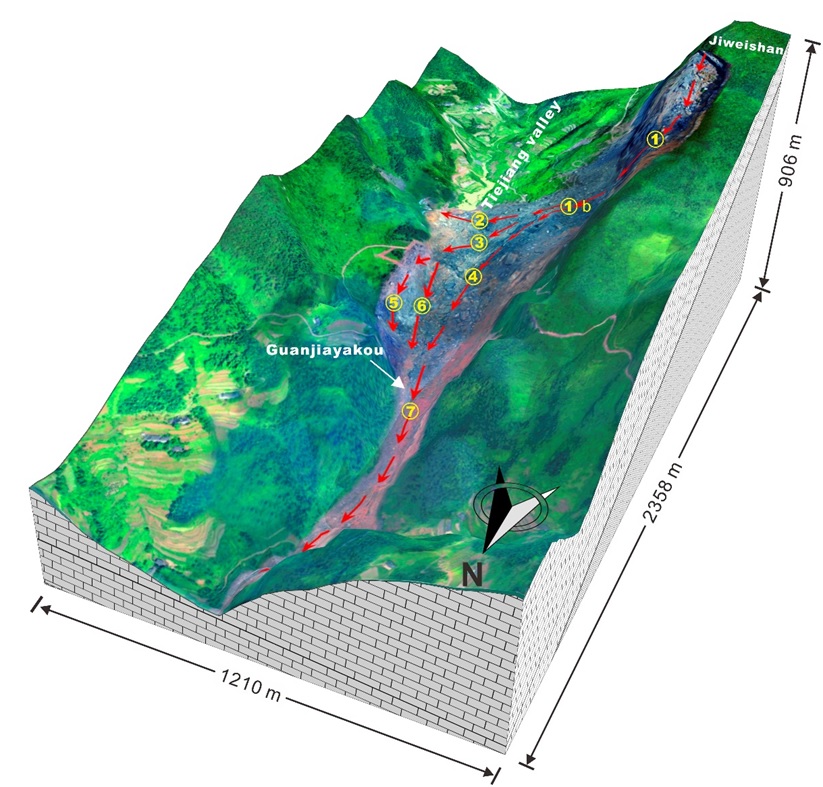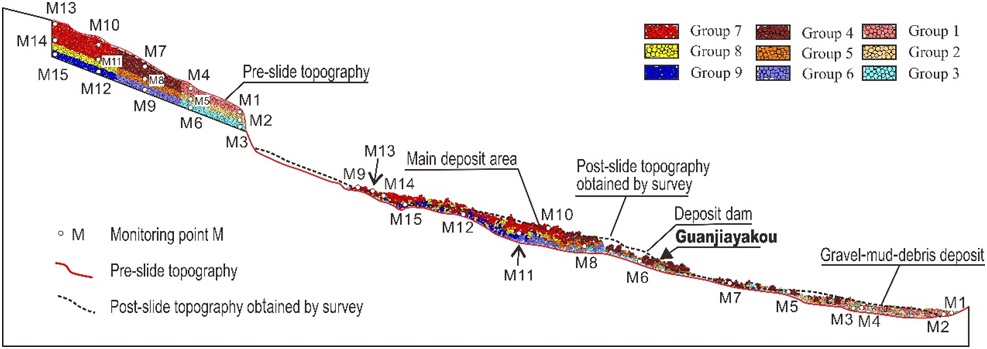Kinetic characteristics of debris flows as exemplified by field investigations and discrete element simulation of the catastrophic Jiweishan rockslide, China
Zongxing Zou, Huiming Tang, Chengren Xiong, Aijun Su, Robert E. Criss. Kinetic characteristics of debris flows as exemplified by field investigations and discrete element simulation of the catastrophic Jiweishan rockslide, China. Geomorphology, 2017, 295: 1-15. (SCI)https://doi.org/10.1016/j.geomorph.2017.06.012
Abstract
The Jiweishan rockslide of June 5, 2009 in China provides an important opportunity to elucidate the kinetic characteristics of high-speed, long-runout debris flows. A 2D discrete element model whose mechanical parameters were calibrated using basic field data was used to simulate the kinetic behavior of this catastrophic landslide. The model output shows that the Jiweishan debris flow lasted about 3 minutes, released a gravitational potential energy of about 6×10^13 J with collisions and friction dissipating approximately equal amounts of energy, and had a maximum fragment velocity of 60-70 m/s, almost twice the highest velocity of the overall slide mass (35 m/s). Notable simulated characteristics include the high velocity and energy of the slide material, the preservation of the original positional order of the slide blocks, the inverse vertical grading of blocks, and the downslope sorting of the slide deposits. Field observations that verify these features include uprooted trees in the frontal collision area of the air-blast wave, downslope reduction of average clast size, and undamaged plants atop huge blocks that prove their lack of downslope tumbling. The secondary acceleration effect and force chains derived from the numerical model help explain these deposit features and the long-distance transport. Our back-analyzed frictions of the motion path in the PFC model provide a reference for analyzing and predicting the motion of similar geological hazards.
Keywords:rockslide-debris flow; discrete element method; deposit features; Jiweishan landslide



